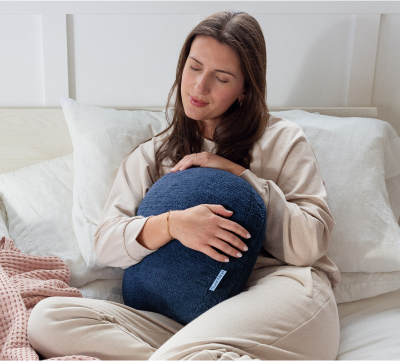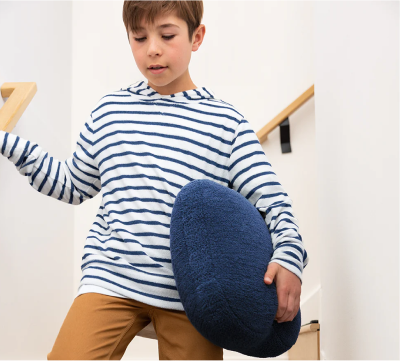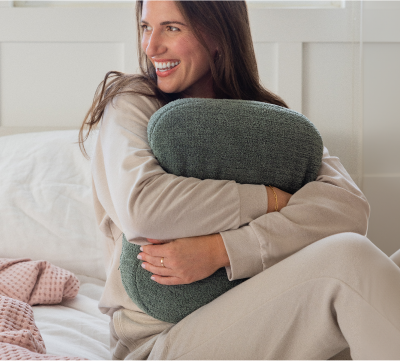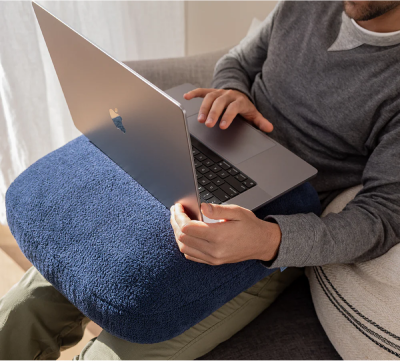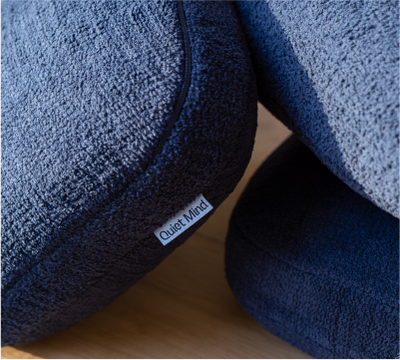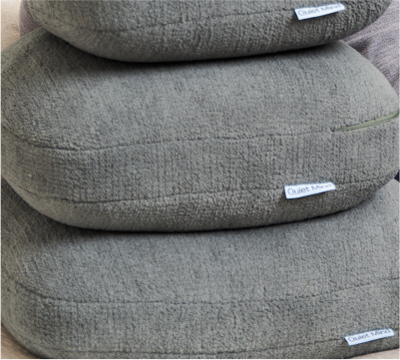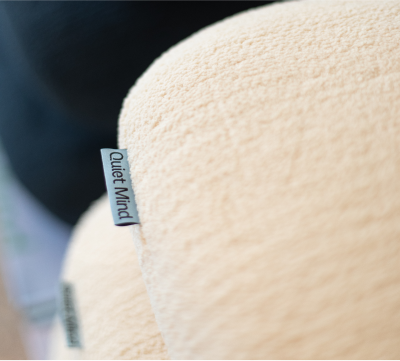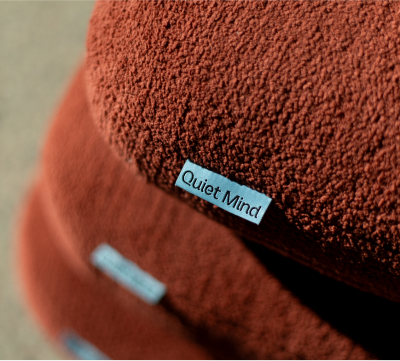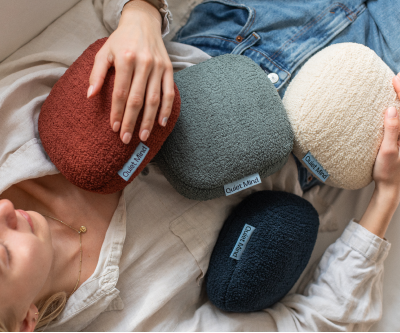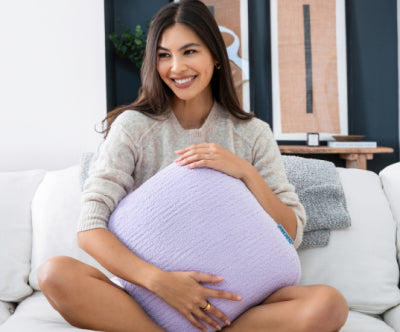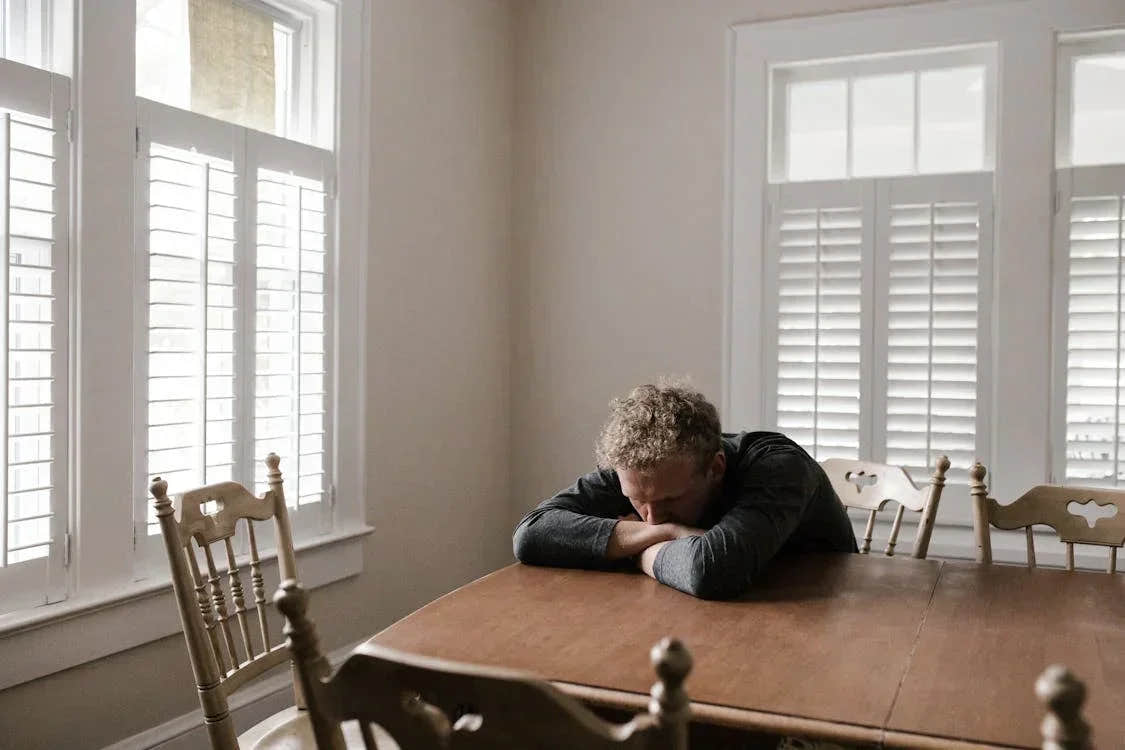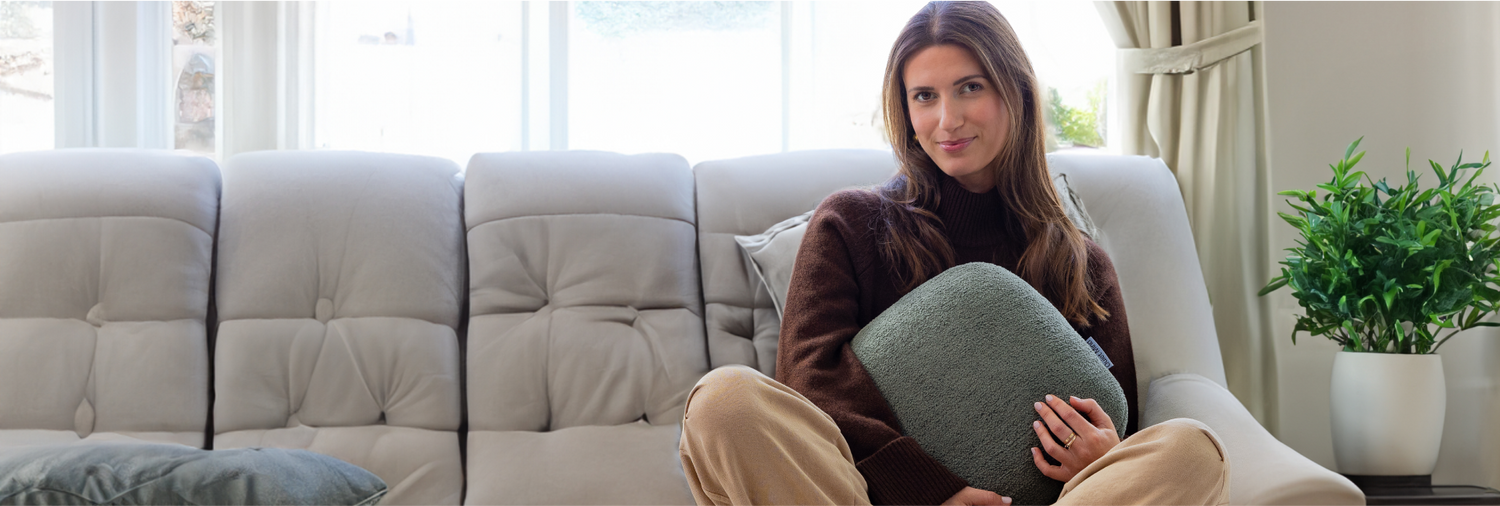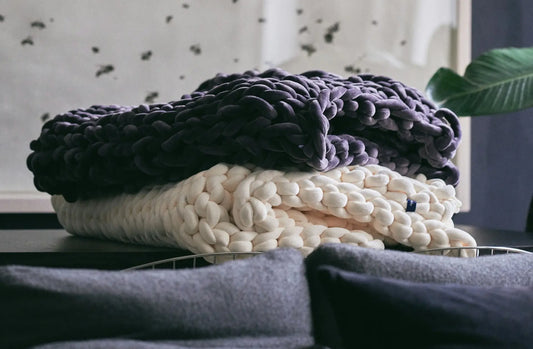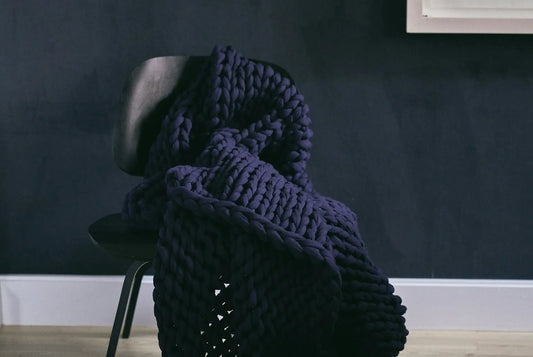Anxiety doesn’t always look like panic. It can settle into your body as restlessness, a racing mind, tight shoulders, or that vague sense of unease you just can’t name. It may visit during busy days or linger quietly beneath the surface—making it hard to focus, rest, or feel fully present in your life.
You’re not alone in this. People experience anxiety at different points in their lives, and for many, it’s not a sudden wave but a low, persistent hum. While traditional treatments can be helpful, there’s growing recognition of the value in natural, body-based approaches that meet anxiety where it begins: in the nervous system.
This guide is for anyone seeking gentler ways to manage anxiety—tools that restore balance without force or pressure. You’ll find evidence-backed techniques, calming practices, and everyday habits that support your mind and body.
What Causes Anxiety (And Why You Might Not Know It)?
Anxiety doesn’t always announce itself clearly. Sometimes, it lives quietly in the body—a tight chest, scattered thoughts, or an underlying sense that something isn’t right. To navigate anxiety with compassion, it helps to understand how it works.
Anxiety is more than just a passing worry. It’s a whole-body experience that begins in the nervous system. When your brain detects a threat (real or perceived), it activates the sympathetic nervous system—your fight-or-flight response. Stress hormones like cortisol and adrenaline surge, shifting your body into a heightened state of alertness.
This response can be helpful in the short term. But when anxiety becomes chronic, it may start to reshape your physical, mental, and emotional health in more lasting ways.
Physical and Environmental Triggers
Loud noises, cluttered spaces, bright lights, or even blood sugar dips can create an anxious body state. Sometimes the body is overstimulated before the mind even knows why.
Psychological Causes: From Trauma to Self-Talk
Unprocessed trauma, harsh inner dialogue, or perfectionism can quietly build anxious patterns. When these thought loops go unchecked, they reinforce nervous system stress over time.
Lifestyle Factors That Sneak In (Sleep, Caffeine, Social Media)
Too little rest, too much screen time, or reliance on caffeine can keep your system wired. These everyday habits often fly under the radar yet contribute to long-term emotional tension.
When Anxiety Becomes Chronic
When your body stays in fight-or-flight too long, anxiety may shift from a temporary state to a chronic pattern. At that point, even small stressors feel overwhelming. Recognizing this change is the first step toward healing.
Common Symptoms of Anxiety
While each person experiences anxiety differently, some of the most common signs include:
- A constant sense of worry or dread
- Difficulty focusing or staying present
- Restlessness, fidgeting, or physical tension
- Disrupted sleep patterns
- Racing heart, upset stomach, or shallow breathing
Anxiety can be triggered by many things: past experiences, unresolved emotions, overstimulation, or even long-term stress that never had space to resolve. And for some, especially those with ADHD, autism, or trauma histories, the nervous system may be especially sensitive to everyday stressors.
It’s important to remember that feeling anxious doesn’t mean you’re weak. It means your body is trying to keep you safe—sometimes more often than it needs to.
Natural Remedies for Calming the Nervous System
The body carries anxiety in quiet, persistent ways. Soothing it isn’t about shutting down emotion—it’s about sending signals of safety. The nervous system responds to consistent, calming input, and nature offers several gentle tools that may support this process.
Below are natural remedies that many people use as part of their daily anxiety care—each working not by force, but by quiet support.
Herbal Supplements That May Help
Some herbs have been studied for their effects on anxiety. When used intentionally and with guidance, they can become part of a grounding ritual:
- Passionflower is known for its calming effects on the brain. It may help increase GABA, a neurotransmitter that slows nervous system activity, which may promote sleep and calm racing thoughts.
- Kava is another herb studied for reducing anxiety. It may work by interacting with emotional regulation centers in the brain, though it’s important to consult your doctor, as it may interact with medications or affect liver function.
These herbs are often available in teas, tinctures, or capsule form. If you’re curious about trying them, start with small amounts and observe how your body responds.
Essential Oils for Gentle Grounding
- Lavender oil has been shown in studies to reduce symptoms of stress and anxiety. It can be used in a diffuser, on a pillow, or added to a warm bath.
- Chamomile oil has a soft, earthy scent and is often used to promote relaxation and reduce anxiety.
The key is to use them regularly in calm moments so that your brain begins to associate their scent with a relaxed state.
Vitamins and Minerals That Support Emotional Balance
Certain vitamins are essential to soothe anxiety in supporting emotional balance and relieving anxiety.
- Magnesium helps support the nervous system and hormone balance. Magnesium glycinate or citrate is often used for its calming effects.
- B Vitamins—especially B6, B12, and folate—help the brain produce serotonin and other mood-regulating chemicals.
You can get these nutrients through food (leafy greens, seeds, legumes) or high-quality supplements if needed.
Natural remedies, such as drinking calming teas can manage anxiety too. These aren’t quick fixes—but when combined with a consistent calming routine, intentional rest, and other supportive practices, they can become valuable tools in managing anxiety. If you’re considering adding supplements or new practices to your routine, it's always a good idea to consult with a healthcare provider first.
Mind-Body Techniques to Ease Anxiety
Your body holds the stories your mind may not yet be able to tell. When anxiety feels overwhelming, gentle, intentional movement and breath can help the nervous system begin to reset.
These practices don’t need to be long or complex. Their power lies in their consistency and in the quiet messages they send to your body: you are safe, you are here, you can soften.
Breathing Techniques for Nervous System Reset
Breath is one of the most immediate ways to calm the nervous system. When you slow your breathing, you activate the parasympathetic nervous system—your body’s built-in rest-and-digest response.
Try the 4-7-8 Method:
- Inhale softly through your nose for 4 counts.
- Hold your breath gently for 7 counts.
- Exhale slowly and fully through your mouth for 8 counts.
Repeat for 3–4 cycles. This technique may be especially useful before bed or during moments of emotional intensity.
Progressive Muscle Relaxation (PMR)
Anxiety often hides in the muscles—in clenched jaws, raised shoulders, and tight hips. Progressive Muscle Relaxation invites you to gently tense and then release each muscle group, starting from the toes and moving up to the head.
This slow practice builds awareness of where you hold tension and gives your body permission to let go.
Yoga and Grounding Movement
Simple yoga poses can help you with anxiety, creating space between the body and anxious thoughts. You don’t need a long session—just a few minutes of movement can restore a sense of steadiness.
- Child’s Pose (Balasana): Helps soothe emotional overwhelm.
- Legs-Up-the-Wall (Viparita Karani): Supports nervous system recovery and lowers cortisol.
- Cat-Cow Pose (Marjaryasana–Bitilasana): Releases spinal tension and increases breath flow.
A daily 5–10 minute practice, even at your desk or bedside, can shift your internal landscape.
How to Build Your Personalized Anxiety Toolkit
Anxiety doesn’t respond to a single fix. What brings calm for one person may feel overwhelming to another. That’s why a personalized toolkit—built around your body’s needs and your daily rhythms—can create a more dependable path to relief.
Think of your toolkit as a mix of sensory supports, movement practices, and quiet rituals you can turn to, depending on how anxiety shows up.
Mixing Techniques Based on Your Symptoms
Anxiety isn’t one feeling—it’s many.
- If you feel jittery or overstimulated, grounding techniques like breathwork or gentle pressure (such as a weighted pillow) can help settle your system.
- If you feel heavy, foggy, or disconnected, try movement, cold water on your face, or an energizing scent.
Balance is key. Include both calming and activating tools so you can respond to different needs with care.
Tools for On-the-Go vs At Night
You won’t always be home when anxiety hits.
- For daytime: Keep a weighted pillow nearby, wear soft layers, use a calming playlist or essential oil roller.
- For night: Wind down with a magnesium soak, herbal tea, or dim lighting paired with a screen-free ritual.
Design your routine so relief is within reach—whether you’re in motion or preparing to rest.
Tracking What Works: Creating a Routine That Sticks
Start noticing what brings relief. Keep a short log in your phone or journal. What did you try? How did your body respond? This kind of quiet tracking helps you build a toolkit that actually works—not just once, but over time.
Patterns will emerge. And with them, your personal map back to calm.
Anxiety Relief for Different Lifestyles
Anxiety doesn’t show up the same way for everyone. Your environment, responsibilities, and sensitivity levels all shape how it feels—and how you respond. That’s why personalizing your approach matters. The right support fits into your life, not the other way around.
Support for Parents and Caregivers
Caring for others often means putting yourself last. But even small pockets of calm can make a difference. Try placing a weighted pillow across your chest while lying down for a few minutes—between naps, during bedtime routines, or anytime the house is still.
Short, sensory-based practices help reset the nervous system without taking you away from those who need you.
Help for Students and Professionals
Mental strain, screen fatigue, and constant notifications can wear down your focus and increase anxious tension. Incorporate quiet resets throughout the day:
- A weighted pillow across your lap while working
- A moment of grounding breath between tasks
- Limiting caffeine and building in screen-free breaks
Techniques for Highly Sensitive People
If you feel deeply affected by sound, light, or other people’s emotions, your anxiety may be sensory in nature. Weighted tools can provide grounding pressure that acts as a buffer against overwhelm.
Soften your space with dim lighting, soft textures, or calming scent. Honor your need for rest—not as a weakness, but as a way to stay steady in a world that often moves too fast.
Daily Habits That Reduce Anxiety Over Time
Anxiety rarely eases from one moment to the next. But small, sustainable habits can gently reshape your nervous system’s baseline—creating more moments of steadiness and less reactivity over time, which can help turn off anxiety.
These aren’t about perfect routines. They’re about creating conditions for your body to feel safe.
Creating a Gentle Morning Routine
How you begin your day influences how your nervous system responds to everything that follows. Rather than rushing into tasks or screens, start slow and grounded.
You might:
- Stretch gently upon waking to increase body awareness.
- Sip a warm, non-caffeinated drink (like herbal tea) to ease digestion and tension.
- Write for five minutes—either gratitude, intention, or free thoughts.
This soft beginning can help regulate cortisol levels and support emotional balance throughout the day.
Mindful Nutrition for Emotional Regulation
The food you eat doesn’t just fuel your body—it affects mood, energy, and nervous system regulation.
- Reduce stimulants like caffeine, alcohol, and refined sugar, which can spike anxious energy.
- Focus on warm, grounding meals like oats, root vegetables, and soups.
- Include nutrients that support serotonin production, such as leafy greens, complex carbs, and healthy fats.
- Stay hydrated during anxiety—dehydration can mimic or amplify anxiety symptoms.
Consistency in meals and gentle rhythms around food can offer the body a sense of predictability and care.
Gratitude and Reflection Practices
When anxiety narrows your attention toward fear or lack, gratitude can gently widen your perspective.
Try:
- Listing 3 things you feel grateful for each evening.
- Noting one sensory moment that brought peace during your day (a breeze, a quiet moment, a kind glance.)
- Writing down any anxious thoughts and then responding to them with reassurance.
These habits don’t ignore pain—they help anchor you in what’s steady and nourishing.
Lifestyle Therapies and Alternative Treatments
True nervous system recovery often asks for more than routine—it invites presence, embodiment, and a return to what feels natural. Lifestyle therapies and alternative approaches offer ways to reconnect with the body’s own rhythm, especially when stress has dulled your senses or narrowed your focus.
These practices are not quick fixes. They are steady companions, helping the body and mind remember what calm feels like.
Nature Therapy and Grounding Techniques
Time spent in nature can reduce stress hormones, lower cortisol, and bring you back to the present. The earth offers a steadying energy, especially when you allow yourself to slow down and feel it.
Ways to connect with natural grounding:
- Walk barefoot on grass, dirt, or sand—this simple practice helps discharge built-up tension.
- Sit beneath a tree and watch the wind in the leaves while breathing slowly.
- Garden, water plants, or touch soil—physical contact with earth supports emotional balance.
- Observe small natural details: sunlight through leaves, the sound of birds, the feel of air on your skin.
These experiences help regulate the nervous system, not by distraction, but through reconnection.
Creative Therapies: Music, Art, and Expression
Anxiety can live in unspoken places—feelings that are hard to name or express. Creative therapy opens space for these feelings to move.
You might try:
- Painting or drawing with no goal other than expression.
- Writing in a journal, or free-writing without judgment.
- Listening to music that matches your emotional state, then transitioning to more calming rhythms.
- Movement—like dance or simple stretching—to release what words cannot hold.
These forms of non-verbal expression allow your inner world to be seen and softened without the pressure of explanation.
Acupuncture and Reflexology
Some people find profound relief from therapies that work directly with the body’s energy systems. Acupuncture uses tiny needles to stimulate specific points that affect emotional and physical balance. Reflexology focuses on applying pressure to certain areas of the feet or hands, corresponding to organs or systems in the body.
These approaches:
- May reduce symptoms of chronic stress and anxiety.
- Help regulate sleep patterns and digestion.
- Can be deeply relaxing and restorative over time.
Look for licensed, experienced practitioners who offer trauma-sensitive or nervous system-informed care.
QuietMind offers a gentle tool to support your recovery journey: our weighted pillow. By applying soothing pressure, it helps activate the body’s relaxation response, aiding in emotional regulation and stress relief.
Cognitive Approaches That Support Natural Healing
While the body plays a central role in calming anxiety, your inner dialogue also shapes how you feel. Thoughts, beliefs, and stories can amplify or soften emotional intensity. The goal is not to “think positively,” but to develop a gentler, more compassionate relationship with your mind.
These approaches support both awareness and transformation—without self-criticism or pressure.
At-Home Cognitive Techniques
Begin with thought tracking. This involves writing down anxious thoughts as they arise and noting:
- The situation that triggered the feeling.
- The specific thought or belief you noticed.
- The emotional and physical response that followed.
By identifying patterns, you begin to create space between the trigger and your response.
Then try reframing:
Instead of: “I can’t handle this.”
Try: “This is hard right now, but I’ve navigated difficult moments before.”
Instead of: “Something bad is going to happen.”
Try: “I’m noticing a fear response. I can stay with this and choose how to respond.”
This kind of language doesn’t deny your feelings—it helps you feel more in control of your response.
Self-Talk and Inner Language
Your nervous system listens to how you speak to yourself. Harsh, critical thoughts reinforce fear. Gentle, kind words help re-establish safety.
Try using phrases like:
- “I am safe in this moment.”
- “This feeling is temporary.”
- “It’s okay to slow down and take care of myself.”
- “I’m allowed to rest.”
Over time, this compassionate voice becomes a calming presence that counterbalances anxious patterns.
Visualization and Imagery
The brain often responds to imagined safety the way it responds to real safety. Visualization taps into this power.
Practice this:
- Sit quietly and imagine a place that feels deeply safe and soothing—a warm blanket, a forest clearing, a quiet room filled with sunlight.
- Notice the details: What do you see, hear, feel?
- Let yourself rest in this imagined space for a few minutes whenever your body feels tense or your thoughts feel chaotic.
This technique is especially effective before sleep, during travel, or after a triggering experience.
Social Connection and Support Systems
Anxiety often whispers that you’re alone—but healing rarely happens in isolation. The presence of others, especially those who can witness your experience without judgment, plays a powerful role in emotional regulation and nervous system repair.
Connection doesn’t have to be loud or performative. Sometimes, just being near someone who feels safe can help you exhale.
Meaningful Conversations
Having one trusted person to speak openly with can reduce emotional burden. Conversations don't need to offer solutions—being seen, heard, and validated can be enough.
Ways to begin:
- “Can I share something that’s been on my mind?”
- “I’m not looking for advice, just someone to listen.”
- “I’ve been feeling anxious lately and didn’t want to carry it alone.”
Allowing someone to hold space with you reduces shame and reinforces safety.
Support Groups and Community
Support groups offer a gentle reminder that your experience is not isolated. Whether in person or virtual, these communities bring together people navigating similar challenges—offering shared tools, compassion, and understanding.
Look for:
- Anxiety-specific groups.
- Trauma-informed mindfulness or movement circles.
- Groups centered around life transitions (grief, caregiving, parenthood.)
Being in a room—physical or digital—where others understand your experience can feel grounding and profoundly healing.
Working with a Holistic Therapist
Therapy doesn’t need to focus only on symptoms. Holistic therapists explore the full picture: mind, body, emotions, and spirit.
You might benefit from a therapist if:
- Your anxiety disrupts daily life or relationships.
- You feel disconnected from your body.
- You’re navigating a transition and need deeper guidance.
Many therapists now integrate somatic practices, breathwork, mindfulness, and cognitive tools—allowing for full-spectrum support.
Boundary Setting for Emotional Ease
Boundaries are not walls; they are bridges to safety. Saying no, limiting social media, or stepping away from overstimulating environments are valid forms of self-care.
Ways to practice gentle boundaries:
- “I’d love to join, but I need a quiet evening to recharge.”
- “I’m not available to talk about this topic right now.”
- “Can we revisit this conversation when I’m more grounded?”
Boundaries create the conditions for nervous system recovery by protecting your time, space, and energy.
Sleep and Anxiety: Breaking the Cycle
Anxiety and sleep are deeply intertwined. One disrupts the other, creating a cycle that can leave you feeling depleted and overstimulated. Rebuilding a sleep rhythm isn’t about perfection—it’s about making nighttime feel safe again.
Why Anxiety Affects Sleep
When anxiety activates the sympathetic nervous system, your body stays on alert. Thoughts race, muscles tense, and your heart may feel like it won’t slow down. This state of hypervigilance keeps you from entering deep sleep.
Sleep deprivation then raises cortisol levels, reduces emotional resilience, and makes anxious responses more intense the next day.
Natural Ways to Improve Sleep Quality
These gentle rituals can help cue your body that it’s time to rest:
- Sip a warm, non-caffeinated tea like chamomile or lemon balm.
- Take a magnesium-rich bath or soak your feet in warm water.
- Dim your lights 1–2 hours before bed.
- Use lavender oil in a diffuser or apply a drop to your pillow.
These practices signal safety to your nervous system, easing the transition to sleep.
Restorative Sleep Habits
Creating a sleep-supportive lifestyle starts with consistency:
- Go to bed and wake up at the same time each day
- Avoid screens for at least 30–60 minutes before bedtime
- Keep your bedroom cool, dark, and quiet
These practices signal safety to your nervous system, easing the transition to sleep. Quiet Mind’s scented weighted pillows can also help you reset your body by providing a calming, grounding touch, making it easier to slip into a restorative sleep.
How Weighted Tools Help Soothe Anxiety
Not all anxiety relief begins in the mind. For many, the body holds the first signs of tension—tight shoulders, shallow breath, restlessness that won’t settle. Weighted tools offer a tactile way to calm these signals. They don’t distract or numb—they anchor.
Quiet Mind’s weighted pillow is designed to do just that. By applying gentle, steady pressure to the chest, lap, or shoulders, it taps into the body’s own mechanisms for safety and regulation.
What Is Deep Touch Pressure and Why It Works
Deep Touch Pressure (DTP) is a therapeutic form of firm, evenly distributed pressure that helps calm the nervous system. It activates the parasympathetic branch—the part responsible for rest, digestion, and slowing the heart rate.
This physical sensation sends a quiet message: you’re safe, you can soften. Weighted tools harness this response to ease the intensity of anxious energy—especially when words or thoughts feel too far away.
Weighted Pillows vs Weighted Blankets for Anxiety
Weighted blankets are commonly used for sleep support, offering full-body stillness. But for daytime relief, weighted pillows are often more practical.
- Pillows are portable, targeted, and versatile.
- Use them while sitting at your desk, traveling, or during short grounding breaks.
- They offer the benefits of deep pressure without overheating or bulk.
Quiet Mind’s weighted pillow was created to meet anxiety where it lives—in the body, in the moment, in the spaces between tasks and rest.
When to Use Weighted Tools: Daytime vs Bedtime Support
During the day, use a weighted pillow when restlessness or overstimulation builds—between meetings, while commuting, or during moments of quiet overwhelm.
At night, place it across your chest or lap as part of your wind-down routine to help cue your body that it’s time to rest.
You don’t need to use it all day. You just need to return to it regularly—like a breath, like a pause, like a hand on your shoulder.
Final Thoughts
Soothing anxiety isn’t about doing more—it’s about creating space for calm to return. Your body already knows how to settle. These practices simply help you remember.
From gentle touch to nourishing food, from quiet connection to intentional breath, every small act of care is a step toward balance. You don’t have to be perfect. You don’t have to rush. You only need to begin—softly, kindly, and at your own pace.
Anxiety may visit, but it does not define you. With steady support, you can feel grounded again.
About QuietMind
At Quiet Mind, we believe calm isn’t something you earn—it’s something you remember. Our mission is to support that remembering through tools that gently reconnect you with your body’s innate rhythms.
Our signature weighted pillow is designed to meet stress where it lives: in your chest, your breath, your muscles. By applying deep, steady pressure to areas like the chest, lap, or shoulders, it helps activate the nervous system’s rest response.
Whether you're easing into sleep or grounding during the day, our pillow offers a tactile sense of comfort—without overwhelm, without expectation.
Further Insights
Discover simple, effective ways to navigate anxiety. These guides share clear explanations and calming approaches to help you find steadier ground.
- What is the 3-3-3 rule of anxiety?
- Is CBD good for anxiety?
- Does ashwagandha help anxiety?
- What is the best thing to take for anxiety?
- How to stop shaking from anxiety?
FAQs
What are natural remedies for anxiety?
Herbs like passionflower and kava, calming essential oils, and nutrients such as magnesium and B vitamins can all support the nervous system.
Can lifestyle changes reduce anxiety?
Yes. A consistent sleep routine, mindful nutrition, reduced caffeine, and daily grounding practices can ease chronic anxiety.
Which mind-body techniques help the most?
Breathwork, yoga, progressive muscle relaxation, and guided imagery are particularly effective.
How can sleep and anxiety be balanced?
Supporting sleep through rituals, calming herbs, and reduced screen time can restore the mind’s ability to reset and process emotion.
What role does thought play in anxiety?
Cognitive techniques like reframing, self-talk, and journaling help disrupt anxiety loops and restore clarity.
How does connection support healing?
Feeling seen, heard, and supported by others regulates the nervous system and creates emotional safety.
